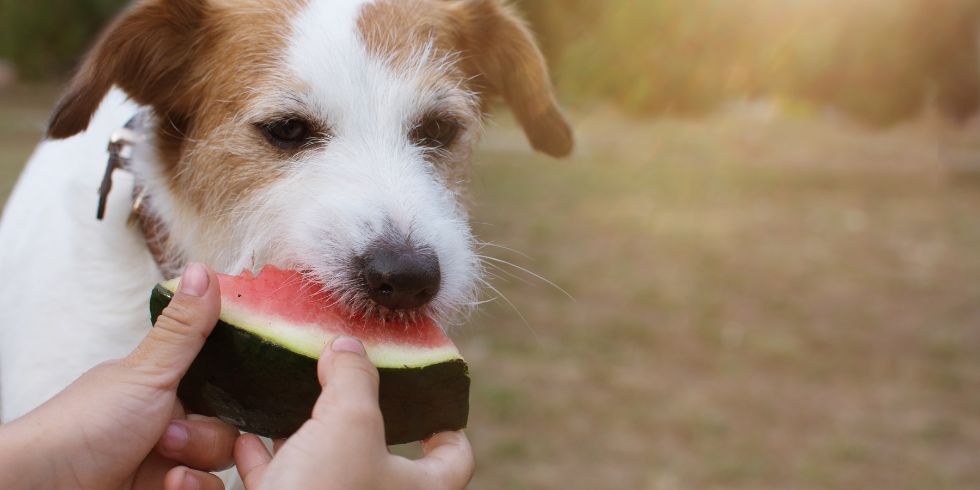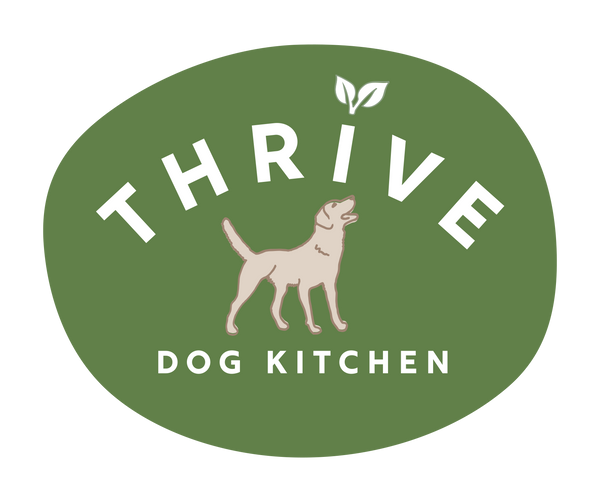
How to Prepare Fruits and Vegetables for Dogs
Share
While dogs do not require fruits, vegetables, nuts or seeds, feeding these foods to your dog whatever their diet is beneficial to their health and well being.
When feeding fruits, vegetables, nuts and seeds to dogs it is vital that the foods are properly prepared to help enable your dog to digest the foods and absorb their nutrients. If fruits, vegetables, nuts and seeds are fed to your dog whole, they may enjoy the taste, but will miss out on the benefits to help them thrive.
Let’s take a deep dive into why dogs cannot digest these foods whole and how best to prepare them.
Why can't dogs digest fruits and vegetables?
There are three main reasons why dogs cannot digest fruits, vegetables, nuts, and seeds.
- Jaw structure
- Digestive tract
- Salivary amalyse
Note - For the purposes of this article we’ll focus solely on fruits and vegetables.
Jaw Structure
Dogs do not have the jaw structure to grind plant matter. Their jaws move up and down only. Dogs’ teeth are designed to rip and tear flesh. Dogs are not natural chewers, which is necessary for processing fruits and vegetables.
Digestive Tract
In addition, a dog’s digestive tract is shorter to those animals that eat only vegetation. As dogs consume foods that may be high in pathogens, they need to get the food in and out very quickly all while absorbing the nutrients from the foods. Their digestive tract is designed to be resilient and process foods with natural bacteria.
Salivary Amalyse
Lastly, dogs lack the salivary enzymes in their mouth to start the digestive process of carbohydrates. Salivary amalyse is the enzyme responsible for breaking down carbohydrates before they enter the stomach. For dogs this process begins later in their pancreas. Too much plant matter can put a strain on the dog’s pancreas.
For these reasons all fruits and vegetables must be prepared for optimal digestion and nutrient absorption. What is the ideal method to prepare plant matter for your dog to enjoy and reap the nutritional benefits?
3 ways to prepare fruits and vegetables for dogs
We recommend three methods of food preparation depending on the type of produce. Each method makes it easier for dogs to digest and absorb the nutrients to help them thrive.
- Puree
- Lightly steam or cook
- Ferment
Puree raw
Pureeing certain fruits and vegetables is a quick and easy way to incorporate produce into your dog’s diet. Store the blended produce in the fridge to feed fresh or portion into ice cube moulds and freeze for meal prep.
Vegetables and Fruit Suitable for Pureeing*
- Leafy greens (spinach, kale, silverbeet, collard greens, microgreens)
- Broccoli
- Cauliflower
- Cabbage
- Green beans
- Capsicum
- Brussel sprouts
- Berries (blueberries, strawberries, raspberries, cranberries)
- Apples
- Pear
- Feijoa
- Mango
Steam or Bake
Starchy vegetables must be fully cooked before feeding them to your dog. In cooking starch vegetables your dog can better absorb the nutrients and the glucose, which your dog will use for energy. Either method is suitable, if the vegetable is fully cooked. If you steam the vegetables save the water and mix it in with your blend to capture extra nutrients.
Vegetables suitable for Baking or Steaming*
- Pumpkin
- Kumara
- Carrots
- Beets
Fermentation
Fermented fruits and vegetables are an excellent source of naturally occurring probiotics for your dogs. They are also full of beneficial bacteria that supports a healthy gut. Fermenting makes the nutrients in the produce more bioavailable for the dog. In essence it mimics the contents of what a wolf eats when it captures its prey. There are numerous recipes for creating dog safe fermentations. You can also purchase premade ferments like sauerkraut for your dog; just ensure there are no onions or leeks in the ingredient list.
Vegetables and Fruit for Fermentation*
- Cabbage
- Carrots
- Berries
*These lists are not extensive. There are many other fruits and vegetables that your dog can safely eat when prepared properly.
How much fruits and vegetables do I feed?
Your dog’s diet should compose of no more than 20% of fruits and vegetables. Of that, only 5% should be fruits due to the high sugar content. If your dog is on a kibble diet start by replacing 10% of their kibble with fruits and vegetables. Then slowly increase the amount to 20%.
Dogs are individuals
Some dogs may do better with fruits and vegetables, while some may not. Feed the dog in front of.
When you process fruits and vegetables for optimal digestion you ensure your dog gains the most benefits from the foods. Without proper preparation the ingredients will go straight through your dog and they will miss out on the nutrients.
Remember, puree non-starchy vegetables and fruits and lightly cook starchy vegetables. If you want to go a step further explore the world of fermentation for an added set of benefits.
We made Original Blend for your dog's health, you add for your love of them. Give it a try today!
